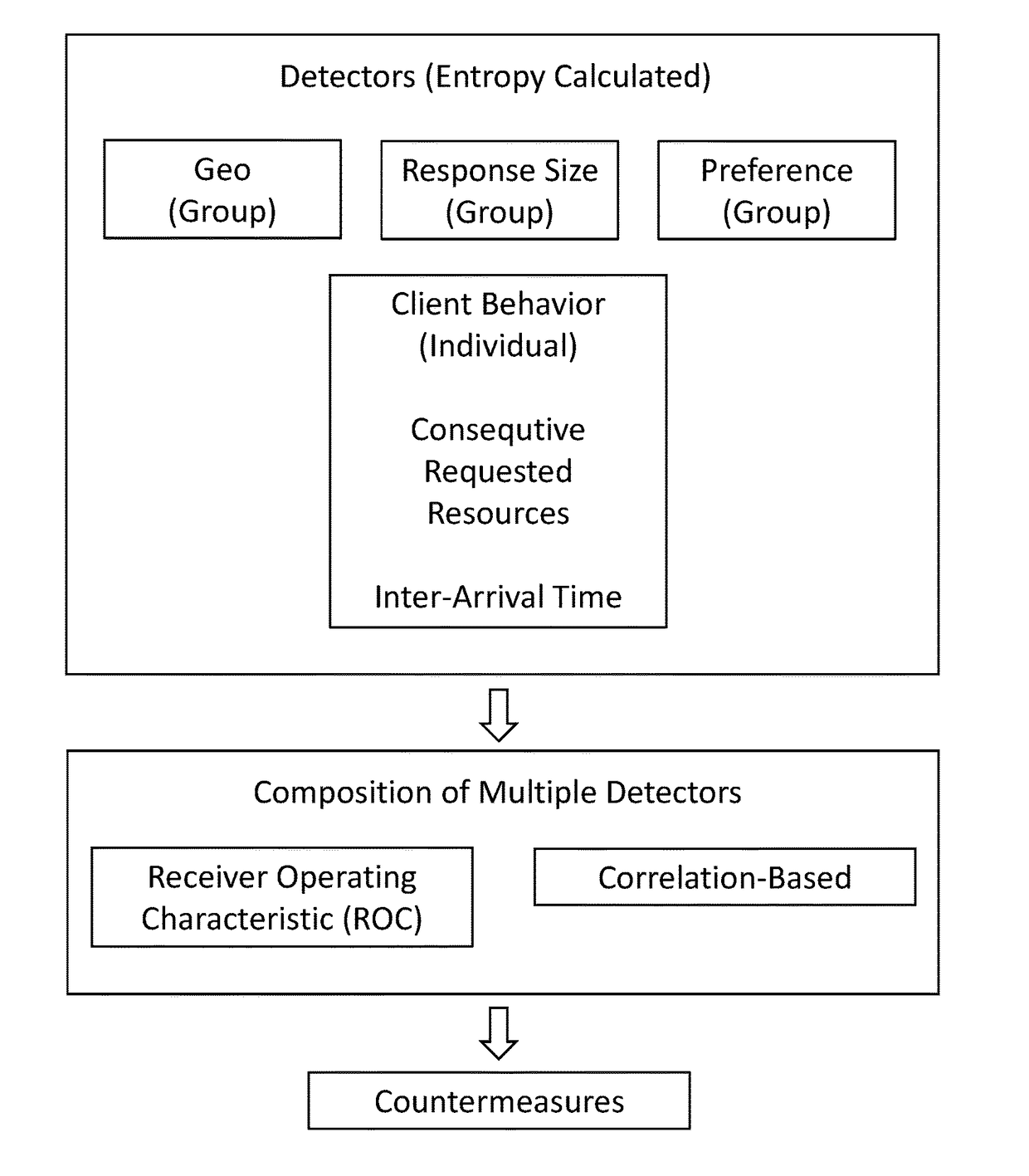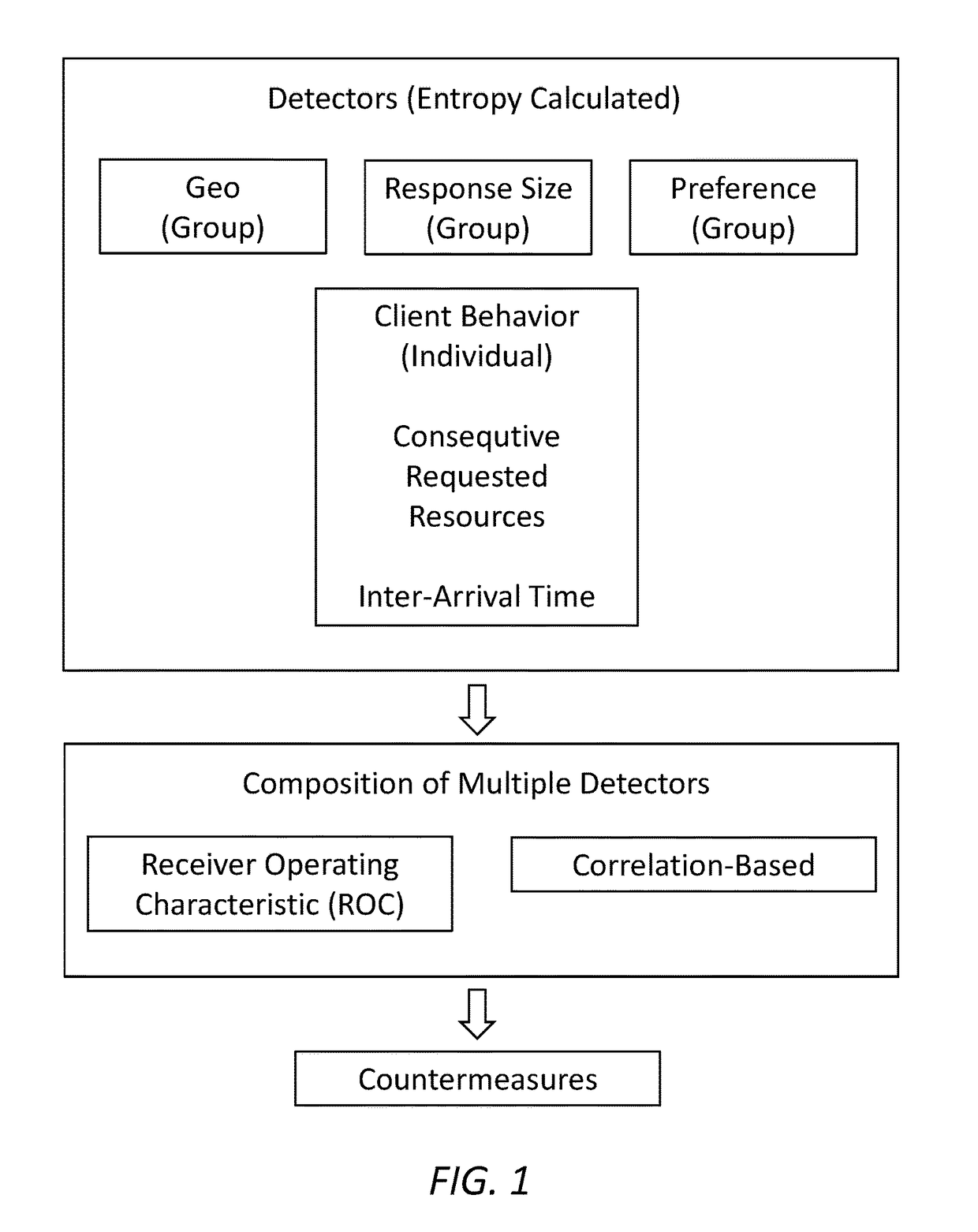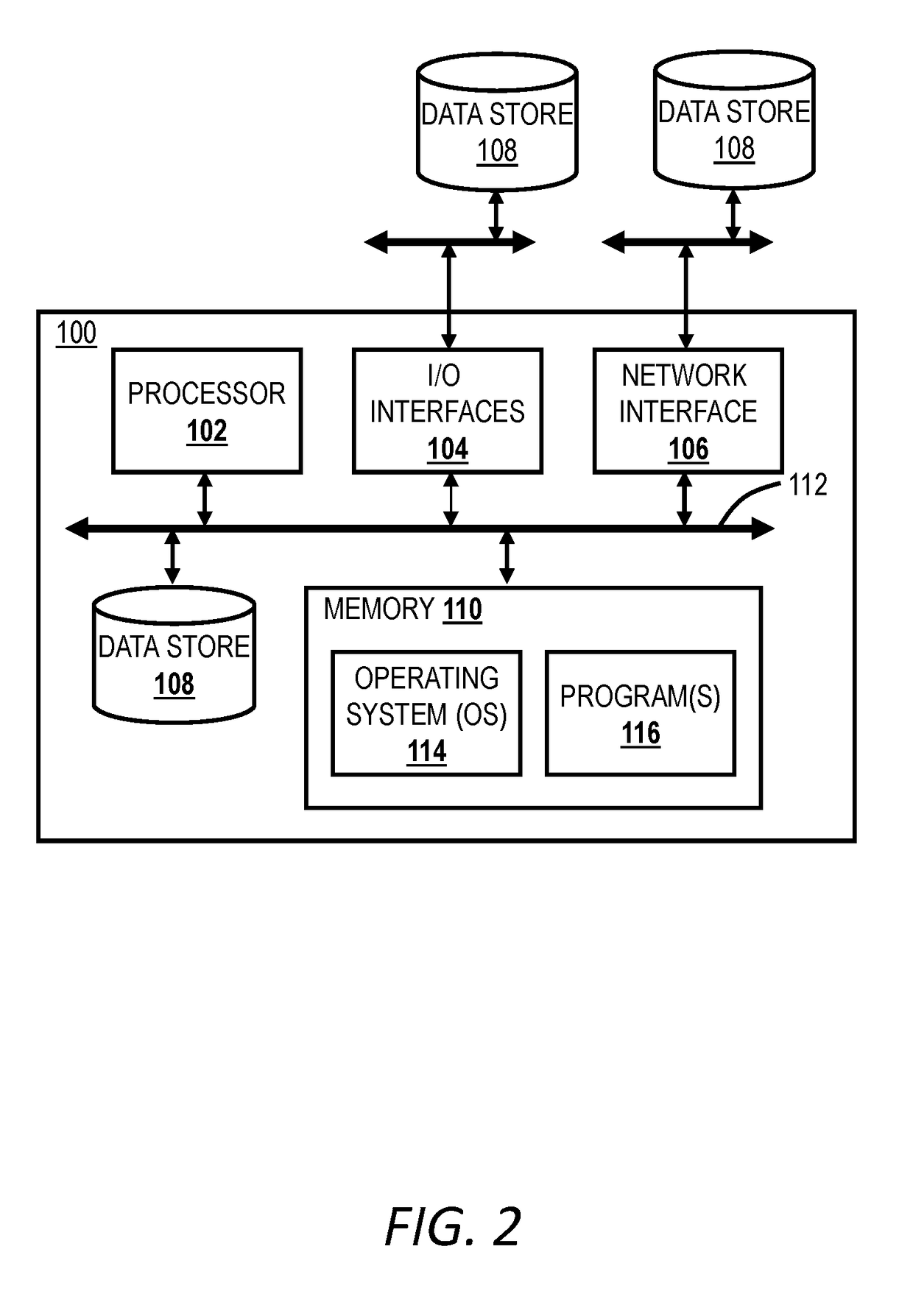Multiple detector methods and systems for defeating low and slow application ddos attacks
a detector method and a technology for detecting distributed denial of service attacks, applied in the direction of transmission, electrical equipment, etc., can solve the problems of imposing on the victim server a large amount of resources on spurious requests, serious problems, etc., and achieve the effect of reducing the risk of ddos attacks
- Summary
- Abstract
- Description
- Claims
- Application Information
AI Technical Summary
Benefits of technology
Problems solved by technology
Method used
Image
Examples
Embodiment Construction
[0017]Referring now specifically to FIG. 1, in one exemplary embodiment, the detectors used herein may be classified into two categories based on the behaviors involved: group or individual. Group detectors are based on the collective behavior of all users using the aggregate traffic, and individual detectors are based on individual user behavior. The following describes the detectors:
[0018]A. Geo detectors (Group) compute the Entropy of Geo IP given time (denoted D(Geo|time)), preference (denoted D(Geo|preference)), or ISP (denoted D(Geo|ISP)). The following are the steps to construct these detectors:[0019](1) The Geo IP of the client includes country, state, city, latitude, and longitude, which can be obtained by the IP to location (ip2loc) mapping database. That is, Geo(user)=ip2loc(IP).[0020](2) We build the normal profile of the detector by calculating the conditional Entropy of Geo IP conditioned on time, preference, or ISP, which is:[0021]ΣjqjΣipi log pi, where pi is the perc...
PUM
 Login to View More
Login to View More Abstract
Description
Claims
Application Information
 Login to View More
Login to View More - R&D
- Intellectual Property
- Life Sciences
- Materials
- Tech Scout
- Unparalleled Data Quality
- Higher Quality Content
- 60% Fewer Hallucinations
Browse by: Latest US Patents, China's latest patents, Technical Efficacy Thesaurus, Application Domain, Technology Topic, Popular Technical Reports.
© 2025 PatSnap. All rights reserved.Legal|Privacy policy|Modern Slavery Act Transparency Statement|Sitemap|About US| Contact US: help@patsnap.com



